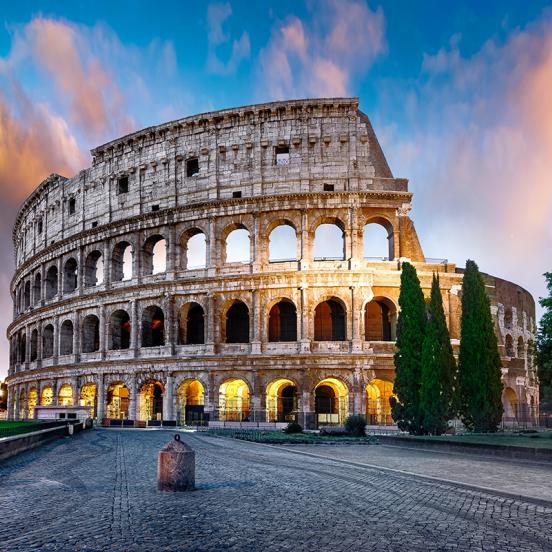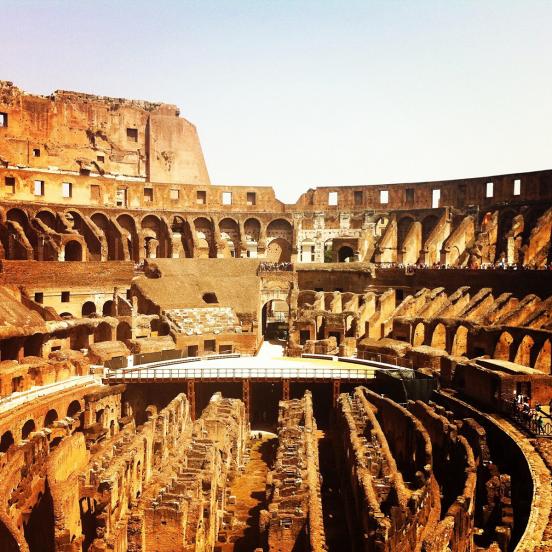Colosseum
The Colosseum was the largest amphitheatre (188 x 156 x 50 metres) ever built in the Roman Empire and is still attracting a huge number of tourists. A total of about 50,000 spectators could sit in its stands at any one time. It was actually called Amphitheatrum Flavium after the imperial Flavian dynasty (69-98), which had it built. The name Colosseum as it is known today was given by the nearby colossal gilded bronze statue (30-35 metres high) which originally represented Emperor Nero (54-68) and later the god of the Sun, Sol. The Colosseum was dedicated in 80 when they held gladiatorial games, executions and naval battles (naumachia) in the arena filled with water. The four levels of the external façade were decorated with various Greek pilasters and although they did not survive in reality a Roman coin represents them with other decorative elements of the building: statues of perhaps gilded bronze may have stood in the arches between the pilasters on the first and second floors, while shields may have been fixed between the pilasters on the third floor. On the top level a canvas awning was drawn over the top of the amphitheatre to provide shade for the spectators.


